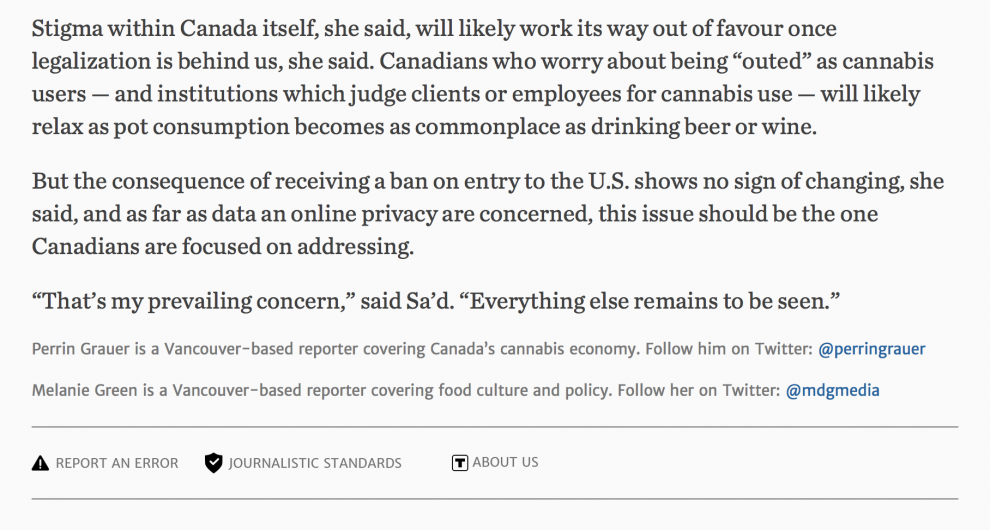The Trust Project also continues to work with tech companies like Facebook, Google, and Bing, in a limited fashion (Bing, for instance, is using the indicators to identify type of work — news, opinion, or analysis — on news stories). And NewsGuard, which aims to rate the transparency and accountability of a bunch of news sites, uses the Trust Indicators when it ranks sources. The Toronto Star explained the differences that readers will see on its site:The additional news partners more than double the number of existing news organizations implementing the Trust Indicators. In the United States and Canada, the Trust Indicators can now be seen on sites hosted by the Bay Area News Group, CBC News, Heavy.com, The Toronto Star, TEGNA, Voice of Orange County, The Walrus and the Wisconsin Center for Investigative Journalism; and in Europe, on those of Corriere della Sera (Italy), El País (Spain), Il Sole 24 Ore. (Italy), Kathimerini (Greece), Orb Media (International), SciDev.Net (International), and SkyNews (United Kingdom). Companies in the process of showing Trust Indicators include Canadian Press, Frontline PBS (U.S.), El Mundo (Spain), Star Tribune (U.S.) and Zeit Online (Germany).
The Trust Indicators have been available since last year on sites owned by the BBC (United Kingdom), dpa news agency (Germany), The Economist (United Kingdom), FourFourTwo (United Kingdom), Globe and Mail (Canada), Hearst Television, Independent Journal Review, Mic, La Repubblica and La Stampa (Italy), Stuff (United Kingdom), Reach Plc (United Kingdom), and The Washington Post.
How does this all translate into what Star readers will experience? For starters, at the bottom of every article published on thestar.com, readers will now find links to three trust-related features: a more visible “Report an Error” button, a link to the Star’s journalistic standards guide and a link to the organization’s “About Us” page.

Leave a comment